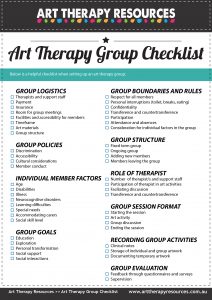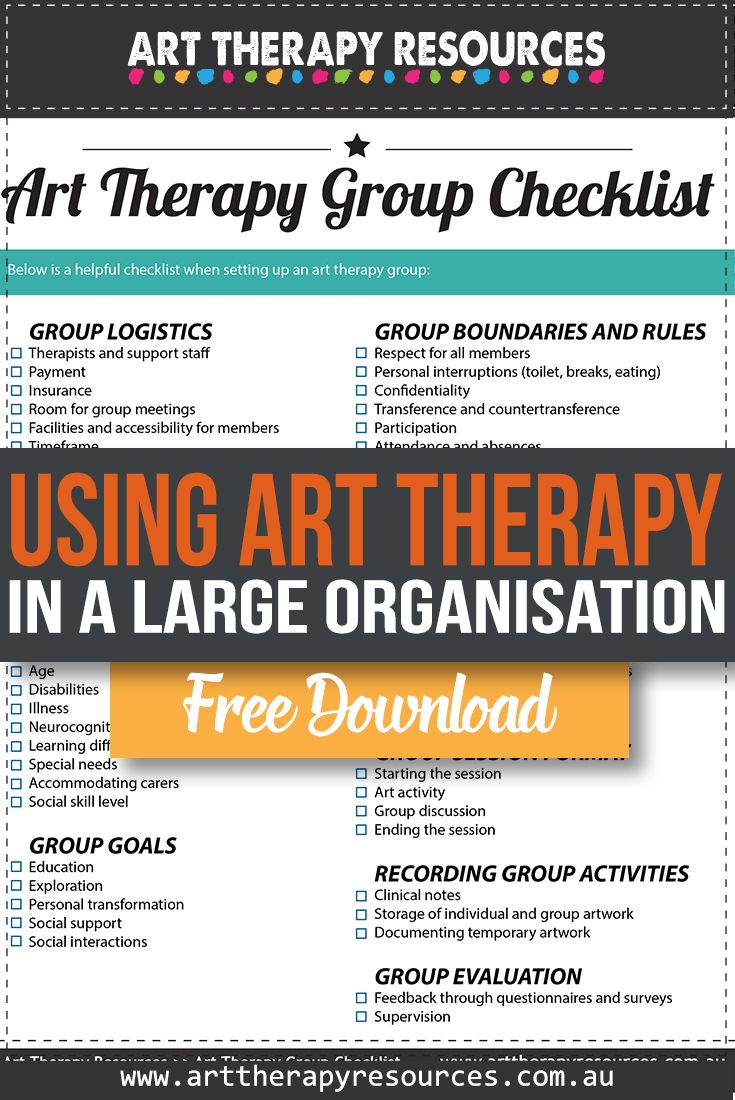THIS POST INCLUDES:
1. Employee Wellbeing
2. Art therapy in the workplace
3. Free Download Art Therapy Group Checklist
EMPLOYEE WELLBEING
Where large companies once focused solely on financial metrics, these same organisations have introduced additional metrics that attempt to measure their social impact which includes their treatment of employees. At the most basic level, this includes offering paid leave entitlements that factor in the life events that employees experience including grief, educational support, and childcare support.
However, many organisations have extended beyond this level to introduce programs within the organisation that aims to support employees in a more holistic sense.
By improving employee wellbeing, the organisation focuses on the mental and physical aspects of the employee to ensure they are safe and supported by their workplace. Wellbeing programs often attempt to take preventative action with the aim to reduce workplace stress and injuries.
In some companies, they may provide a structural framework for wellbeing initiatives by introducing a variety of measures including:
- Mental health programs
- Physical activities – yoga, exercise groups, sports teams
- Employee Assistance Programs
- Flexible work arrangements
- Healthy food options inhouse
- Social functions
Wellbeing of employees has a significant impact on their mindset and how they conduct their job. From this perspective alone, organisations need to take a proactive approach to nurture wellness amongst employees. This helps improve productivity as well as fosters a positive view of the workplace which can impact an employee’s decision to stay with their employer over the long term.
Wellbeing programs are also essential for organisations that may be in an industry where high stress and physical safety are contentious issues. For example, in the mining industry there has been significant discussion on the negative impact of FIFO (fly in-fly out) conditions. Additionally, these industries experience workplace accidents that could result in death. For these organisations programs must exist within the organisation that support workers through difficult experiences.
ART THERAPY IN THE WORKPLACE
Art therapy has shown to be beneficial in providing tools to combat stress and anxiety. Moreover, the process of engaging in art-making with others within a group also improves understanding, communication, and collaboration within groups. When participants engage in a common goal (with low stress), relationships can improve.
Art therapy within the workplace can take many forms including:
- Drawing
- Painting
- Sculpting
- Collage
These common modes of art therapy involve creative expression, physical engagement, and free expression. These aspects apply to art therapy that is created individually or in groups. Additionally, for groups, collaboration and collective problem solving are bonuses of art therapy. Moreover, the shared experience that employees participate in creates bonds between colleagues that may help heal conflict or establish stronger alliances within teams. This positively impacts future attitudes in working with others within an organisation.
Some benefits of incorporating art therapy workshops in workplace environments include:
- Creative thinking
- Reduction in workplace stress
- Developing communication skills
- Build trust within teams through collaboration
- Improve workplace socialisation
- Encourage collaboration through multi-department engagement
- Develop organisational culture
- Develop organisational goals
- Encourage creative problem solving
Art therapy is uniquely focused on the process of creative expression compared to working towards final artworks or projects. This process can help workplace groups identify important dynamics within groups and develop an understanding of how these dynamics affect the organisation as well as each employee.
Additionally, art therapy can play a significant role to help groups create final projects that become part of the workplace landscape. This includes art to display that serves as a reminder to participants of their collaborative effort with other employees which may improve how employees value the input from each other. That visual reminder can help employees establish feelings of accomplishment, cohesion, and productive team involvement. It also has the added benefit of potentially improving the aesthetics of the workplace.
Creating art in workplace groups helps foster teamwork, however, it also gives a visual and tangible presence of how each employee has individual viewpoints and skills that contribute to an overall project. This helps identify individual strengths that forge together to produce a successful group outcome.
Below is a list of some ideas on using art therapy within a large organisation:
- Draw a representation of an island in the centre of a large page that represents a deserted island. One version could have each person identify their strengths that can contribute to the group surviving on the island. Another version would involve employees identifying the strengths of other employees that would help contribute to the group surviving on the island. Both of these approaches provide a distinct approach to identifying employee strengths. In the first instance, the employee has the opportunity to reveal to their colleagues the strengths they believe they bring to the group. These strengths may be already utilized or they may be strengths the individual employee believes are underutilized in their workplace. The second approach provides the group with the opportunity to creatively acknowledge and express the contribution they believe their colleagues have in the workplace.
- Make a project based on a workplace milestone or anniversary. This item may celebrate a point in time of the organisation’s development or completion of a significant project. This project could be placed on display as an homage to the company’s history or be part of a time capsule that celebrates a time in the future.
- Organisations may experience a traumatic event. Examples include a violent crime (robbery) or the death of a staff member either at the workplace or at home. This process enables employees to share experiences and emotions with others. It also provides the organisation with the opportunity to support staff and develop a sense of trust between employees and management.
FURTHER READING
- Client Barriers To Art Therapy Participation
- Comparing Individual and Group Art Therapy
- Connecting the Mind and Body – Understanding Somatic Experiences
- How to Create an Art Therapy Supplies Kit
- How To Organise an Art Therapy Group
- How to Write a Curriculum for an Art Therapy Group
- Preparing Guidelines for an Art Therapy Workshop
- Using Art Therapy to Improve your Emotional Resilience
- Using Art to Build Your Brain Muscle
FREE DOWNLOAD

BUILD YOUR ART THERAPY REFERENCE MATERIALS:
Pin this image to your Pinterest board.

SHARE KNOWLEDGE & PASS IT ON:
If you’ve enjoyed this post, please share it on Facebook, Twitter, Pinterest. Thank you!
